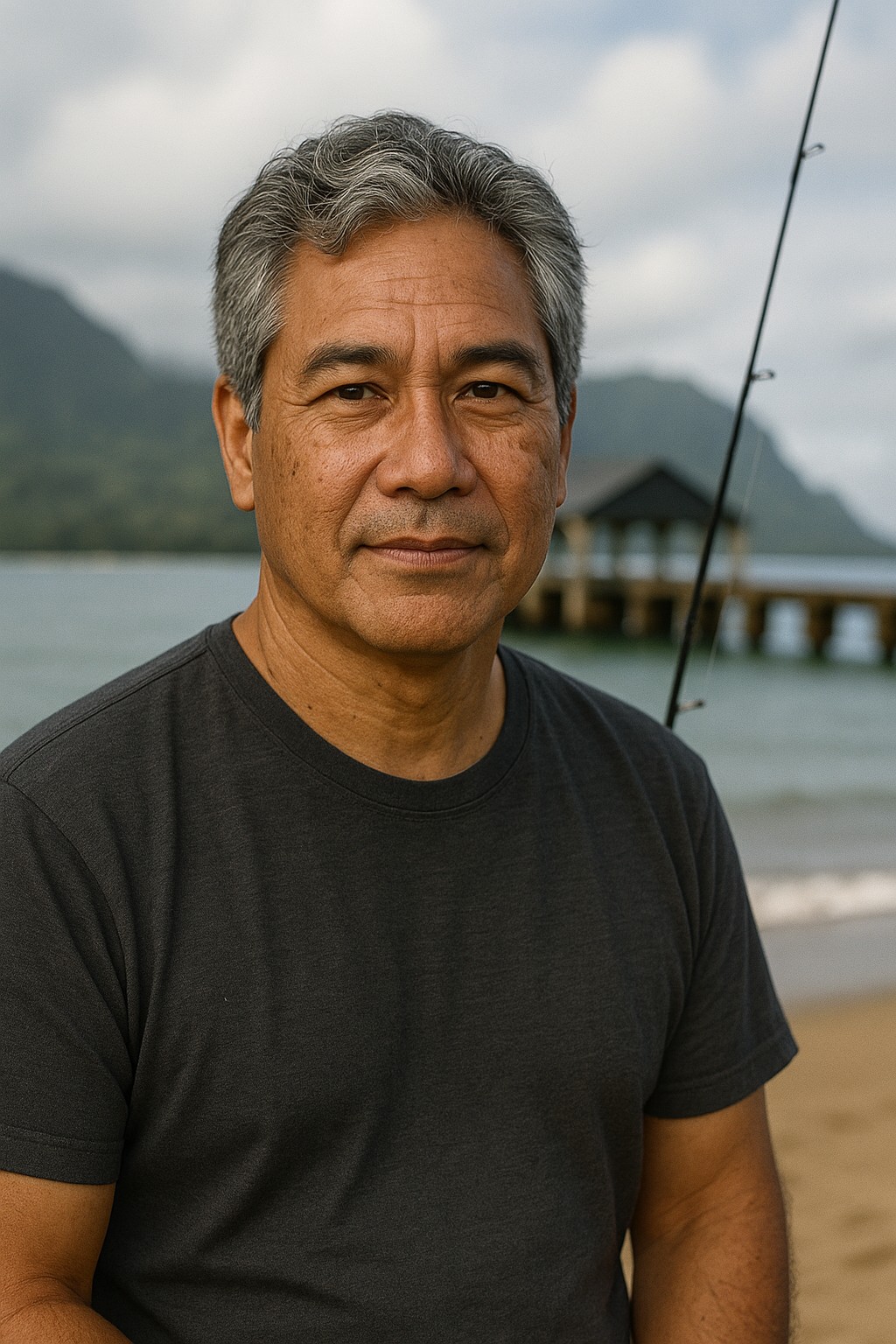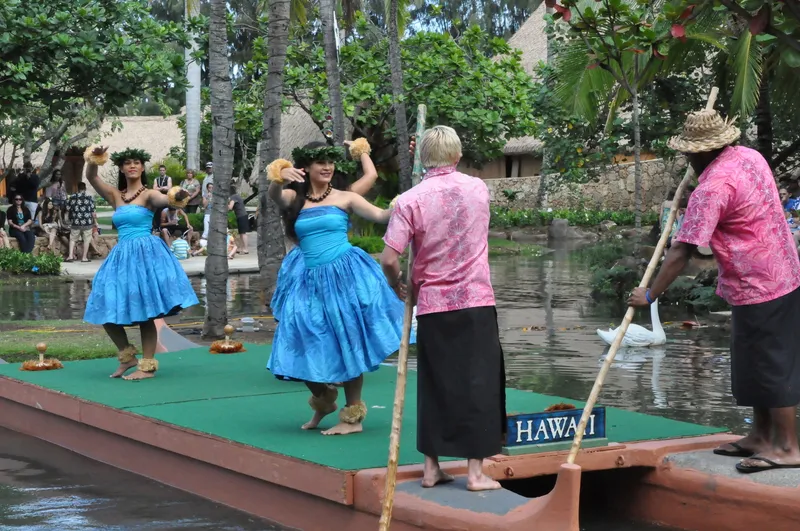

Hālau Life
The sacred world of teachers, students, and lifelong bonds in hula education

Written by a Hawaiian Culture Expert
Kalani MillerThe Hālau Family
To understand hula deeply, you must understand the hālau system where knowledge passes from teacher to student. Joining a traditional hālau means much more than taking dance classes. It's entering an ʻohana, a family with lifelong bonds and serious commitments.
Students become hula sisters and brothers, supporting each other through years of training. Life in the hālau follows strict protocols, both spoken and unspoken.
Protocols and Respect
Life in the hālau follows strict protocols, both spoken and unspoken. These protocols teach respect, discipline, and cultural values that extend far beyond dance technique.
Basic Protocols
- • Remove shoes before entering
- • Silence phones and electronics
- • Treat every implement with reverence
- • Never sit with back to kuahu altar
- • Bow when entering and leaving
Learning Protocols
- • Paʻa ka waha - keep mouth closed
- • Listen quietly when kumu speaks
- • Learn by watching and repetition
- • Never question publicly
- • Practice patience above all
A core principle is paʻa ka waha - keep your mouth closed. Students listen quietly and learn by watching when the kumu speaks. Many hālau forbid belonging to multiple schools simultaneously. Some even require permission before changing your hairstyle, showing how completely the kumu guides the student's hula life.

The Emotional Reality
These intense relationships mean the hālau can be emotionally complex. The bonds run so deep that when they break, the pain feels devastating. Former students sometimes describe leaving a hālau like going through divorce or losing family identity. This intensity reflects the depth of spiritual and cultural connection involved.
The Sacred Role of Kumu
At every hālau's center stands the kumu hula, whose title literally means "source" or "foundation." They're the tree trunk from which students draw life and knowledge.
A kumu is far more than a dance instructor. They're a living repository of knowledge, custodian of specific hula lineages, spiritual guide, mentor in proper living, and guardian of the stories held within each mele.
Kumu Responsibilities
- • To their own teacher (lineage keeper)
- • To their students (guide and protector)
- • To the hula traditions (guardian)
- • To the community (cultural bridge)
- • To the ancestors (memory keeper)
- • To the land (spiritual connection)
- • To the language (preservation)
- • To the next generation (preparation)
The kumu's responsibilities extend in all directions: to their own teacher, to their students, to the hula and chants in their care, and to the community and ancestors whose memories they keep alive. They cultivate respect for Hawaiian language, for the land, for implements and costumes, and for the entire cultural system that supports hula.
The Authority of Kumu
No one can claim the title kumu for themselves. It must be earned through years of study and bestowed by one's own teacher, a sacred trust that can never be broken. This lineage system ensures authentic transmission of knowledge and maintains the spiritual integrity of the tradition.
🏠 Hālau Structure
- Kumu Hula: Master teacher
- Hoʻopaʻa: Chanter/drummer
- ʻŌlapa: Dancers
- Haumana: Students
- Kuahu: Sacred altar
📈 Student Journey
Beginner
Basic steps & protocols
ʻŌlapa
Skilled dancer
Hoʻopaʻa
Chanter/drummer
ʻŪniki
Graduation ceremony
⏰ Training Time
2-3 years
4-5 years
5-7+ years
Decade+ commitment
The Student's Journey
The path of a haumana student demands dedication of body, mind, and spirit. Training is rigorous and repetitive, designed to make movements so automatic they become part of muscle memory. The goal is transcending mechanical execution to reach a state where the dancer's soul takes over.
ʻŌlapa (Dancers)
Students typically begin as ʻōlapa, dancers. This stage focuses on mastering basic movements, learning proper stance, and developing the physical strength and flexibility needed for advanced hula.
- • Master basic steps and gestures
- • Learn proper ʻai haʻa stance
- • Develop rhythm and timing
- • Understand story meanings
Hoʻopaʻa (Chanters)
Through years of practice and study, dedicated ʻōlapa may earn the rank of hoʻopaʻa, literally "to make fast" or "to memorize." These advanced practitioners become trusted leaders.
- • Master vast oli and mele repertoires
- • Lead chanting and drumming
- • Understand deep cultural meanings
- • Guide other students
The Sacred Graduation: ʻŪniki
The ʻūniki represents the ultimate achievement in hula education, a formal graduation ceremony that marks complete mastery and the kumu's trust to carry the lineage forward.
The Demanding Path to ʻŪniki
The path to ʻūniki is extraordinarily demanding. Students may train five to seven years or much longer before being considered ready. They must master complex repertoires of hula and oli while understanding the kaona, hidden meanings within the texts.
Crafting Sacred Implements
A crucial requirement involves crafting all their own implements, adornments, and costumes. This process connects students deeply to the materials and traditions of hula.
Instrument Creation
- • Harvest and prepare gourds for ipu drums
- • Skin fish for pūniu knee drums
- • Craft bamboo pūʻili rattles
- • Select and polish ʻiliʻili stones
Adornment Making
- • Weave feathered caps for ʻuliʻulī
- • Bind thousands of feathers for lei hulu
- • Create traditional kapa cloth
- • Stamp designs with sacred ink
Students even create their own ink from roasted kukui nuts and sacred lei ashes to stamp traditional designs onto performance skirts. This hands-on creation process ensures deep understanding of every element used in hula.
The ʻŪniki Ceremony
The ʻūniki ceremony follows strict protocol, often beginning with purification rites like hiʻuwai, a pre-dawn ocean dip. Other respected kumu hula attend as official witnesses, their presence serving as the "diploma" in this oral tradition.
Levels of ʻŪniki
ʻŌlapa
Expert dancers with full repertoire mastery
Hoʻopaʻa
Authorized to teach chanting and drumming
Kumu Hula
Master teachers who can open their own hālau

